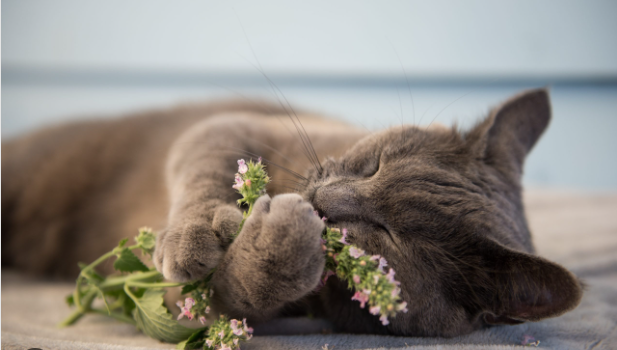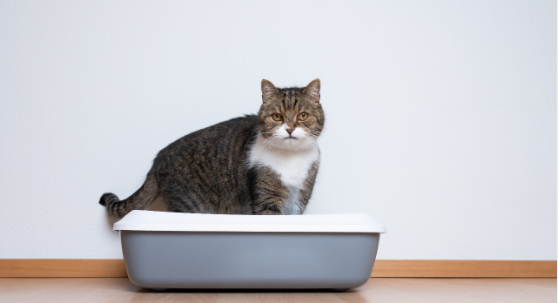Can Cats Eat Catnip?
Cats are one of the most interesting and entertaining pets to have around. They have unique personalities, behaviours, and traits that make them quite fascinating creatures.
As a cat owner or lover, you might have heard about catnip – a plant that is known to have a profound effect on felines. But what exactly is catnip?
Explanation of What Catnip Is
Catnip (Nepeta cataria) is an herb that belongs to the mint family. It has green leaves and white/purple flowers and grows abundantly in North America and Europe.
The active compound in catnip is nepetalactone – an essential oil found in the leaves and stems of the plant. When cats smell or ingest catnip, it triggers a reaction that can be quite amusing to watch.
Brief History of Catnip and Its Effects on Cats
Catnip has been around for centuries, with records dating back to ancient Roman times where it was used for medicinal purposes such as reducing fever, headaches, and other ailments. However, it wasn’t until much later that people realized its effects on cats. In fact, farmers used to sprinkle dried catnip on their barn floors to attract cats to catch rodents.
When cats come into contact with catnip by smelling or ingesting it, they usually become more playful or even aggressive for a short period before becoming relaxed or sleepy. Not all cats react to it though – only about 50-70% of them are affected by its scent.
Question: Can Cats Eat Catnip?
Now that we know what catnip is let’s answer the question of whether cats can eat it or not. The answer is yes; they absolutely can! Eating small amounts of fresh or dried leaves shouldn’t harm your furry friend as long as they don’t consume too much.
However, it’s essential to note that catnip should not be a substitute for your cat’s regular diet but a treat or occasional snack. In the next section, we will dig deeper into what catnip does and its effects on cats.
What is Catnip?
If you’re a cat owner, you’ve probably heard of catnip before. Catnip, also known as catmint, is a perennial herb that belongs to the mint family.
It’s native to Europe and Asia but can be found growing all over the world today. The scientific name for catnip is Nepeta cataria.
Where it Comes From and How it’s Grown
Catnip grows naturally in fields and along roadsides in many parts of the world. However, it can also be cultivated by gardeners who want to grow it for their furry friends. Catnip plants typically grow up to three feet tall and have attractive gray-green leaves with small purple or white flowers.
Growing your own catnip is relatively easy since this plant thrives in various soil types and doesn’t require much care other than occasional watering. Simply plant the seeds or young plants in well-draining soil, place them where they get plenty of sunlight, and watch them grow!
Chemical Compounds in Catnip that Affect Cats
Catnip contains an essential oil called nepetalactone which has been shown to affect cats’ neurological systems when smelled or ingested. This compound stimulates the receptors in a cat’s brain responsible for pleasure and euphoria, making them feel relaxed and happy.
While not all cats are affected by nepetalactone (about 30% don’t react at all), those that do may exhibit behaviors such as rolling around on the ground, licking or chewing on objects near them, meowing excessively, or becoming more playful than usual. Research has also suggested that nepetalactone may have insect-repelling properties which could explain why some plants evolved this compound – as a way to protect itself from pests!
Effects of Catnip on Cats
How cats react to catnip
Most cat owners are familiar with the amusing and silly behavior that their cats exhibit when they come into contact with catnip. Common reactions include rolling around, rubbing their faces on the plant or toy, and licking or chewing on it. However, not all cats react to catnip in the same way.
According to research, approximately 50-75% of cats will display some kind of response to catnip, while others show little interest or no reaction at all. Additionally, kittens under six months old and senior cats over ten years old are less likely to respond to its effects.
The science behind why cats react to catnip
Catnip contains a chemical compound called nepetalactone which is responsible for producing the unique response in cats. When your feline friend smells or ingests this compound, it binds to receptors in their nose and triggers a behavioral response that can last from a few minutes up to an hour.
This reaction is similar in nature to pheromonal responses seen in other animals. Interestingly enough, while adult humans do not typically respond to nepetalactone as our furry companions do, there are some known benefits for humans as well – including repelling mosquitos.
Benefits of giving your cat catnip
While giving your cat access to some fresh nip might seem like nothing more than a fun way for them (and you!) to pass the time and bond together over playtime antics – there may be some benefits beyond entertainment value. Many animal behaviorists believe that providing your furry friend with access to something stimulating like catnip can help fulfill their natural hunting instincts which could lead them away from other potentially destructive behaviors like scratching furniture or biting cords. Additionally adding an air of freshness might just encourage healthier activity overall by providing cats with an easy and exciting path to healthy playtime, and overall better mood.
Can Cats Eat Catnip?
Many cat owners find themselves wondering whether or not it is safe for their feline friend to eat catnip. The answer is yes, cats can eat catnip.
In fact, some cats enjoy chewing on fresh catnip leaves. However, consuming too much of it or consuming low-quality catnip can lead to potential risks.
Is it Safe for Cats to Eat Catnip?
Catnip is completely safe for cats to eat and isn’t toxic to them. If your feline friend ingests a small amount of dried or fresh catnip leaves, they will likely experience no negative side effects and may even experience a mild sedative effect. However, if your cat consumes too much of the herb, they may experience digestive issues such as vomiting or diarrhea.
Potential Risks Associated with Eating Too Much or Consuming Low-Quality Catnip
While a small amount of fresh or dried catnip is generally safe for cats to consume, eating too much of it can cause gastrointestinal upset such as vomiting and diarrhea. Additionally, some lower-quality catnips may be contaminated with pesticides that could harm your pet’s health. Another potential risk associated with feeding your pet large amounts of this herb is that they may become desensitized to its effects over time which means that it won’t have the same stimulating effect on them which in turn reduces its effectiveness as an offering.
Alternatives To Feeding Your Cat Actual Leaves
If you decide not to let your cat chew on leaves directly there are several alternatives available for you:
- Cat toys – there are many toys infused with organic herbs available in the market
- Cat treats – most pet stores offer treats containing different levels of organic herbs
- Dry food – some brands sell dry food containing small amounts of catnip
- Cat food toppers – some topper brands offer it as an option
- Herbal teas – you can brew organic catnip tea and add it to your cat’s water bowl or give it directly.
While cats can eat catnip, it is important to keep in mind that moderation is key. Feeding them too much or consuming low-quality herbs can lead to digestive issues.
Alternatives such as toys, treats, and herbal teas can provide similar effects without the risks associated with consuming raw leaves. Always monitor your pet’s behavior when introducing new substances into their diet.
Conclusion
A Recap of the main points discussed
Throughout this article, we’ve discussed what catnip is and its effects on cats. We’ve explored how cats react to it and what its benefits are for feline friends. We’ve answered the question: can cats eat catnip?
While it’s safe for cats to consume small amounts of fresh or dried leaves, excessive consumption can lead to vomiting, diarrhea, and other health concerns. It’s important to monitor your cat’s behavior and never force them to eat catnip.
Final thoughts on whether or not you should feed your feline friend some nip
Many pet owners wonder if they should give their furry friends some nip as a treat, but ultimately it comes down to personal preference and consideration of your cat’s individual needs. Some owners swear by using catnip as a tool for training or behavior modification, while others prefer not to give it at all. If you do decide to try giving your cat some nip, start with a small amount and watch for any adverse reactions.
Always choose high-quality catnip from a reputable source. While there are potential risks associated with feeding your cat actual leaves of the plant rather than using toys or other forms of the herb in moderation; when used responsibly under supervision from their owners there is no harm in letting them partake in this natural stimulant that many find entertaining and satisfying for their pets.




